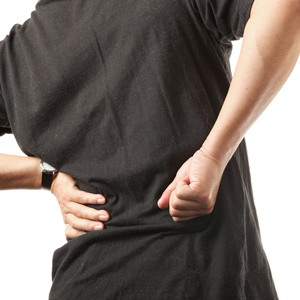 Last month, Perth chiropractor, Dr Adam Rocchi, gave some great tips on reducing your chances of injury when running. In that article he gave some good general tips, and finished off with an in depth look at knee biomechanics and how muscular dysfunction can cause or perpetuate knee injuries.
Last month, Perth chiropractor, Dr Adam Rocchi, gave some great tips on reducing your chances of injury when running. In that article he gave some good general tips, and finished off with an in depth look at knee biomechanics and how muscular dysfunction can cause or perpetuate knee injuries.
This month we’ve persuaded him to give us a bit more of that gold and dive into the low back. We’re going to look at how various issues can cause dysfunction in that area. But first let’s take a quick look at the low back anatomy.
The Low Back
The bony structure of the low back is made up of 5 lumbar vertebrae, the sacrum on which they rest and the pelvic bones that are attached into the sacrum at the back. While not part of the low back area, the femurs in the thigh attach into the pelvic bones to form the hip joints. Many low back muscles also link into the hip.
Of those muscles there’s the gluteus maximus at the back of pelvic bones attaching into the femur. It’s a very large muscle that forms much of the bulk of the buttock area. When it contracts it extends the leg backward. Its function is important for ensuring a good stride length and for pelvic stability. Problems with this muscle may result in hamstring and calf issues, as well as groin pain.
The gluteus medius and minimus and the tensor fascia latae (TFL) are on the side of the pelvis and they are important for stability of the pelvis, in concert with gluteus maximus. If these muscles fail to activate correctly then the pelvis may tip as you run, stressing the sacroiliac and lumbar spine joints leading to inflammation and pain. It may also irritate the iliotibial band causing pain in the outside of thigh.
At the front there is the psoas and iliacus muscles. They are important for flexing the spine and hips forward. In people who sit for much of the day, they can tend to shorten. This means when you stand, the normal lumbar spine curves are distorted often causing inflammation and pain particularly in the lower lumbar spine.
Disc and Nerve Problems
Many people carry dysfunction in the muscles and joints of the low back without knowing it. They may remain blissfully unaware for years. However when they start to stress their bodies more, either through starting or increasing their training levels, symptoms can appear.
One example is that of someone carrying a symptom free disc bulge in their lumbar spine. Research suggests that disc bulges are very common even without symptoms with prevalence ranging from 30% in 20 year olds to 84% of 80 year olds.(1)
Imagine then that a person is carrying a disc bulge between the L5 and S1 vertebrae. A disc bulge at that level will often cause irritation of the S1 nerve root in the spine. The S1 nerve root is a major contributor to the nerve supply of the gluteal muscles.
Under normal circumstances, the nerve root may adapt to the presence of the disc bulge. With an increase in training the extra stress on the nerve root from the bulge may start to compromise its function. The gluteal muscles fail to receive the innervation they need to function properly and become weaker.
Pelvic instability may result causing further injury to joints, for example, an old “axial tear” in the centre of the disc that has since healed tears further again towards the outside of the disc. The outer rim of the disc happens to have a high concentration of pain fibres. One can go from being pain- free to extreme pain with one bad move if the neuromuscular system is faulty. A vicious cycle is established.
Prevention and Cures
If you have low back symptoms, you need to have it attended to as soon as you can. Dr Rocchi ( chiropractor ) uses a specific treatment which is a combination of Trigenics, a method of assessment and treatment using the neuromuscular strength and length tests, and a tool known at the PulStar. Adam uses the Spine Scan tool to scan the spine looking for spinal fixations and then treats those areas with a gentle and specific adjustment with the instrument at a specific frequency and force depending on the patient and the problem.
If your low back’s holding you back or if you’d just like to be checked to prevent symptoms developing, call the practice now on (08) 61508783 to arrange an appointment in South Perth.
- Brinjikji W, Luetmer, PH et al. Systematic Literature Review of Imaging Features of Spinal Degeneration in Asymptomatic Populations. Am J Neuroradiol 2015 http://www.ajnr.org/content/ajnr/early/2014/11/27/ajnr.A4173.full.pdf Access date 3rd May 2017


No comments yet.